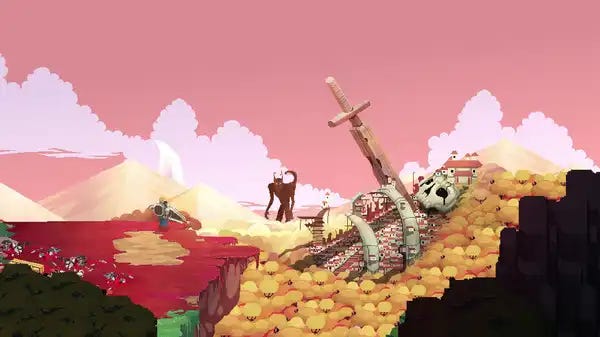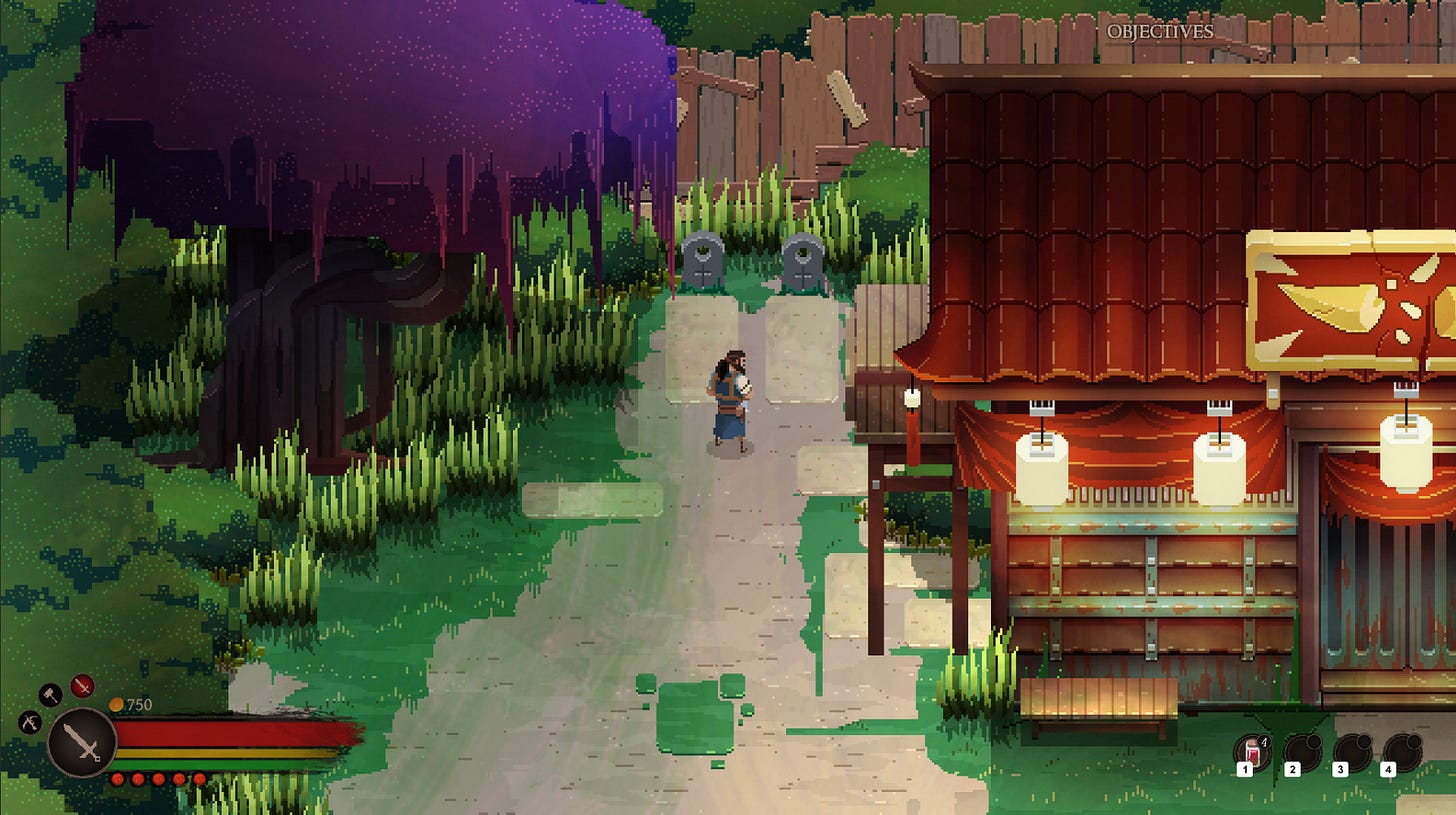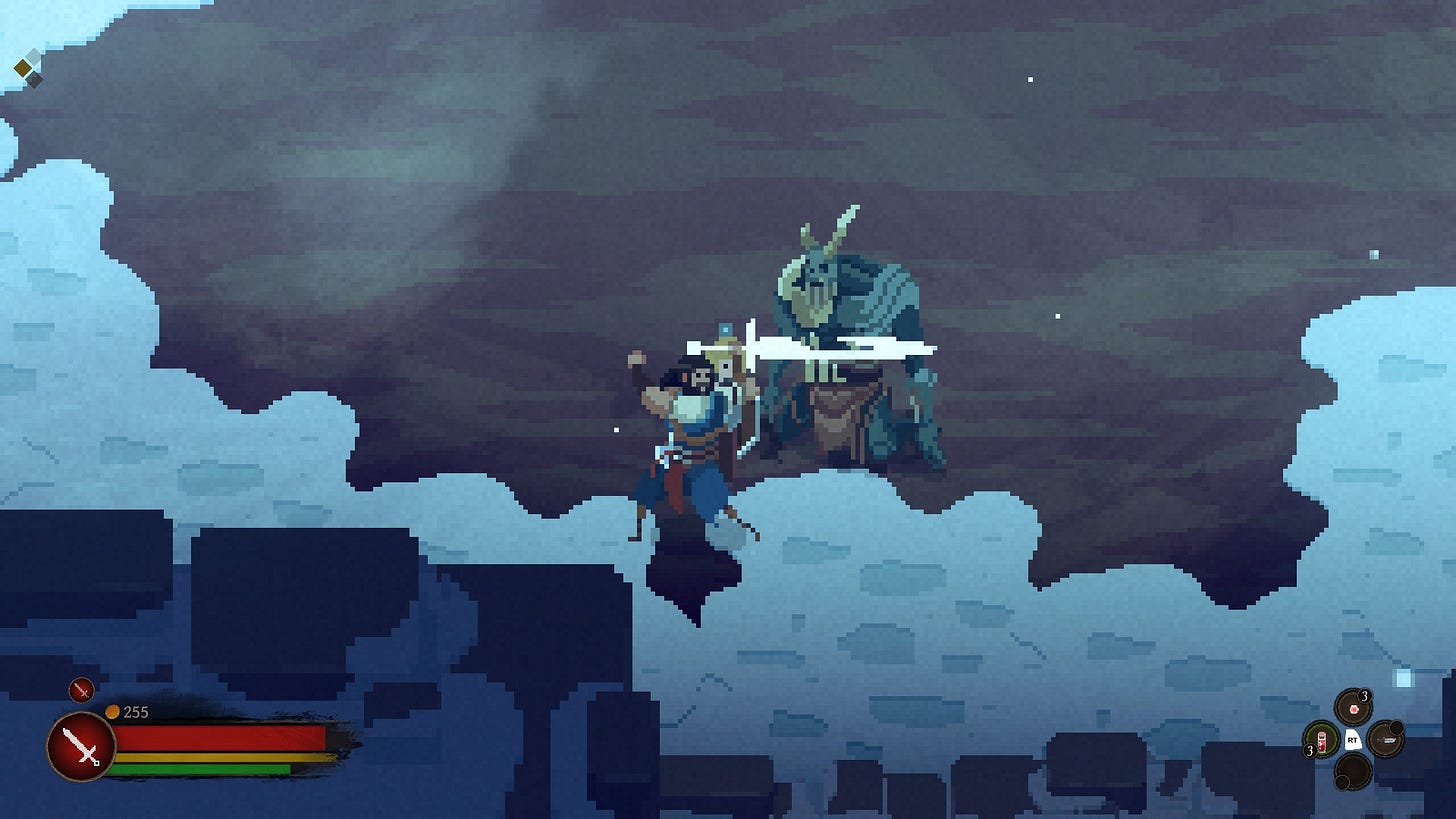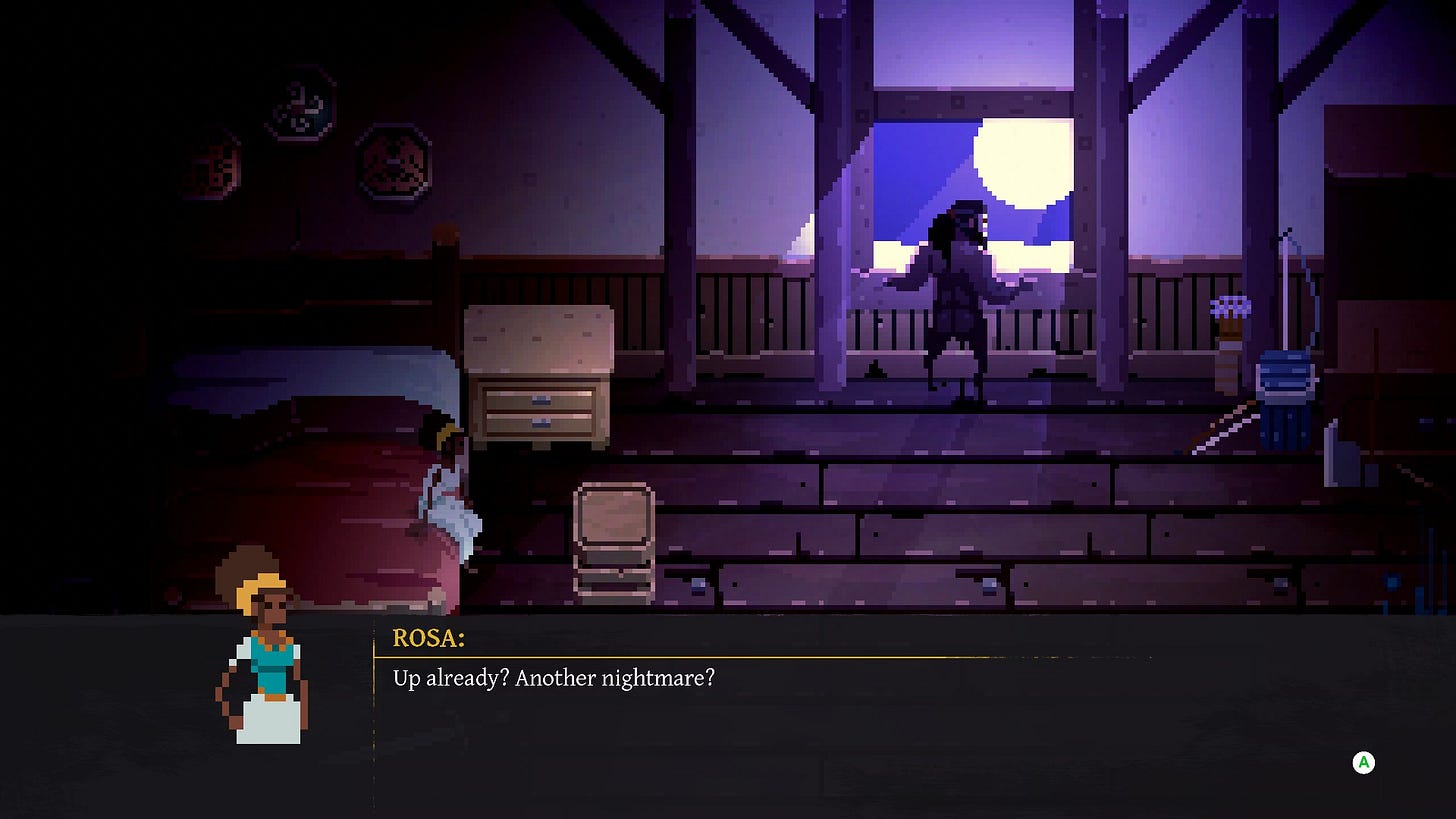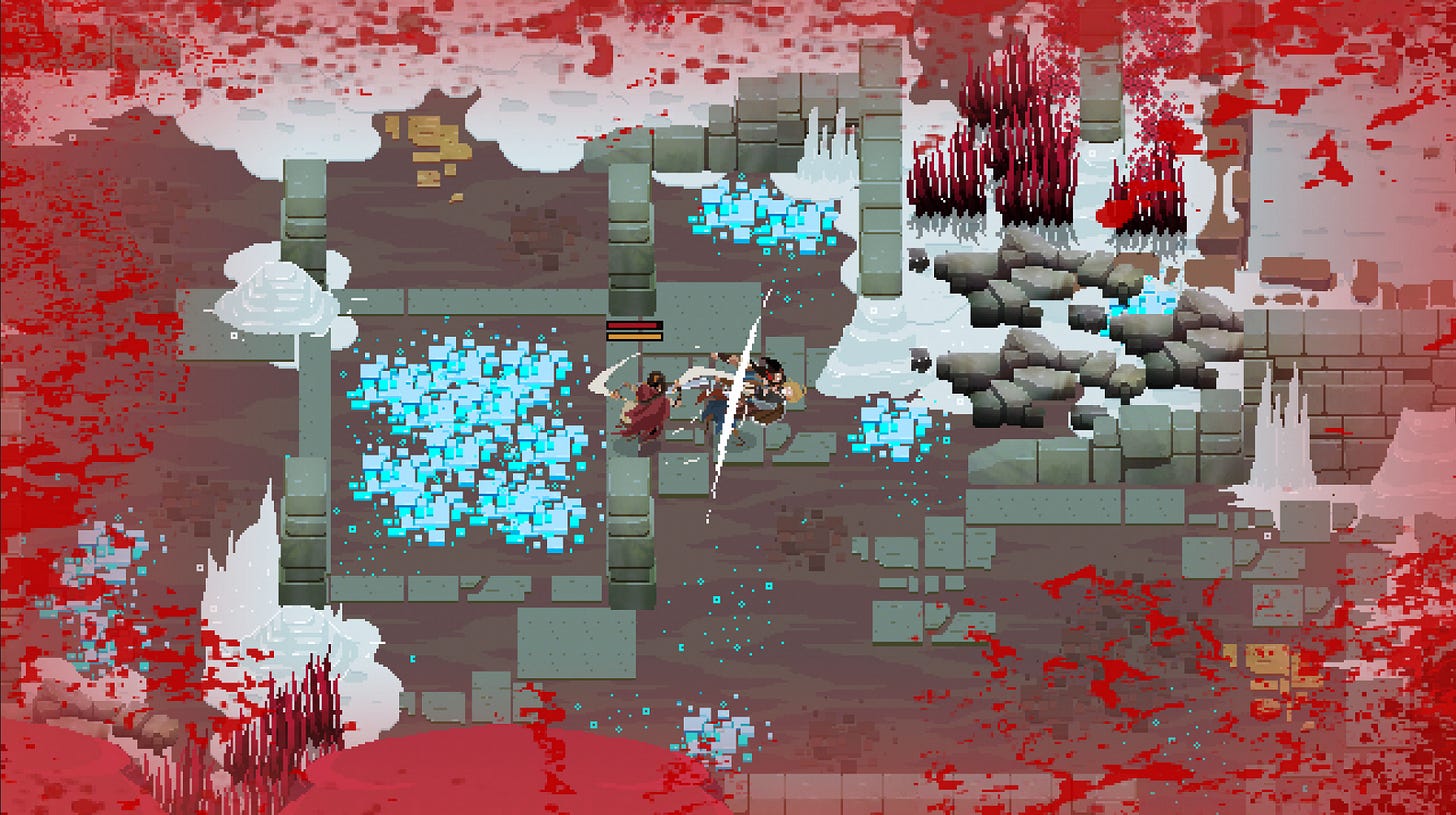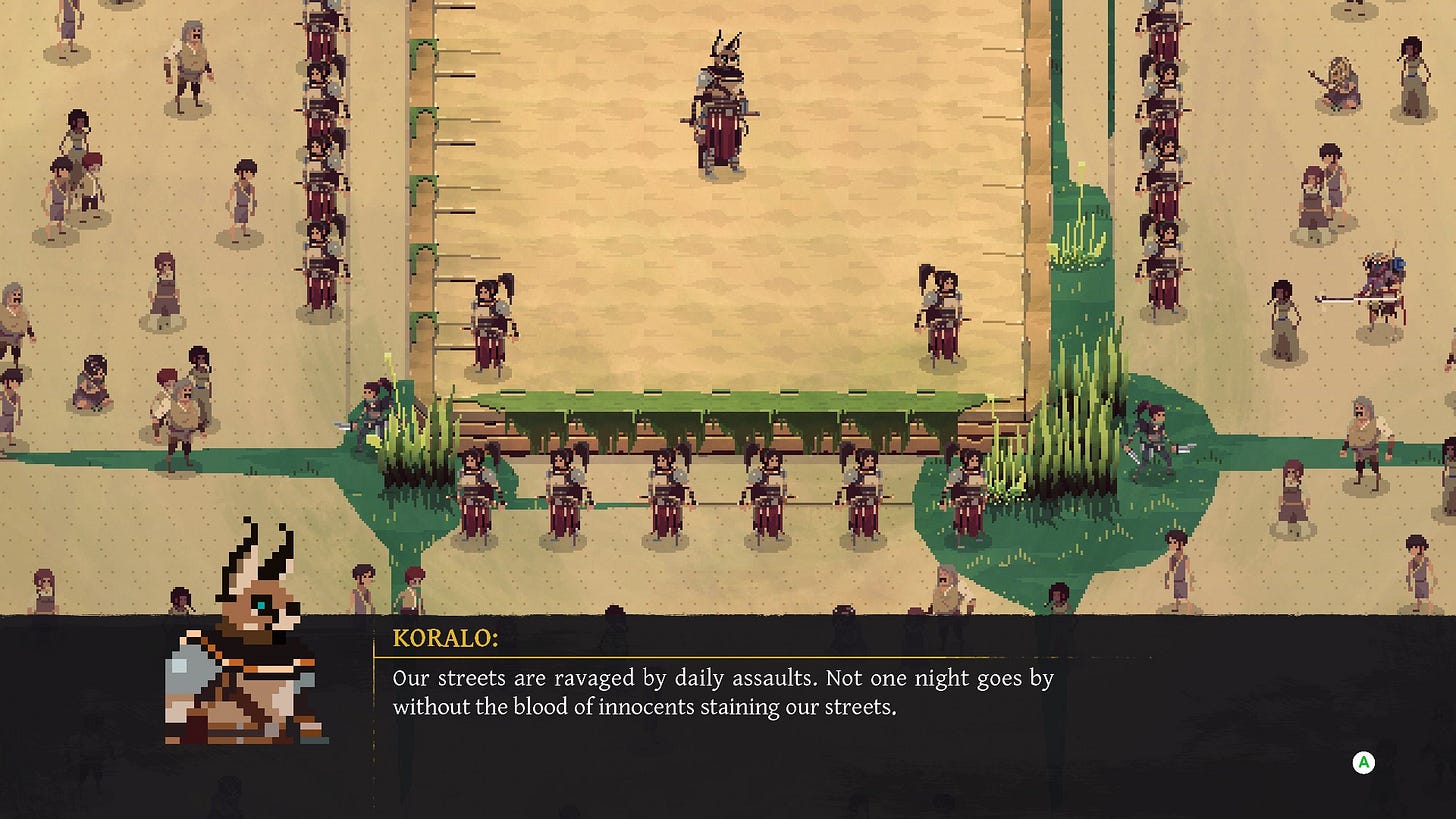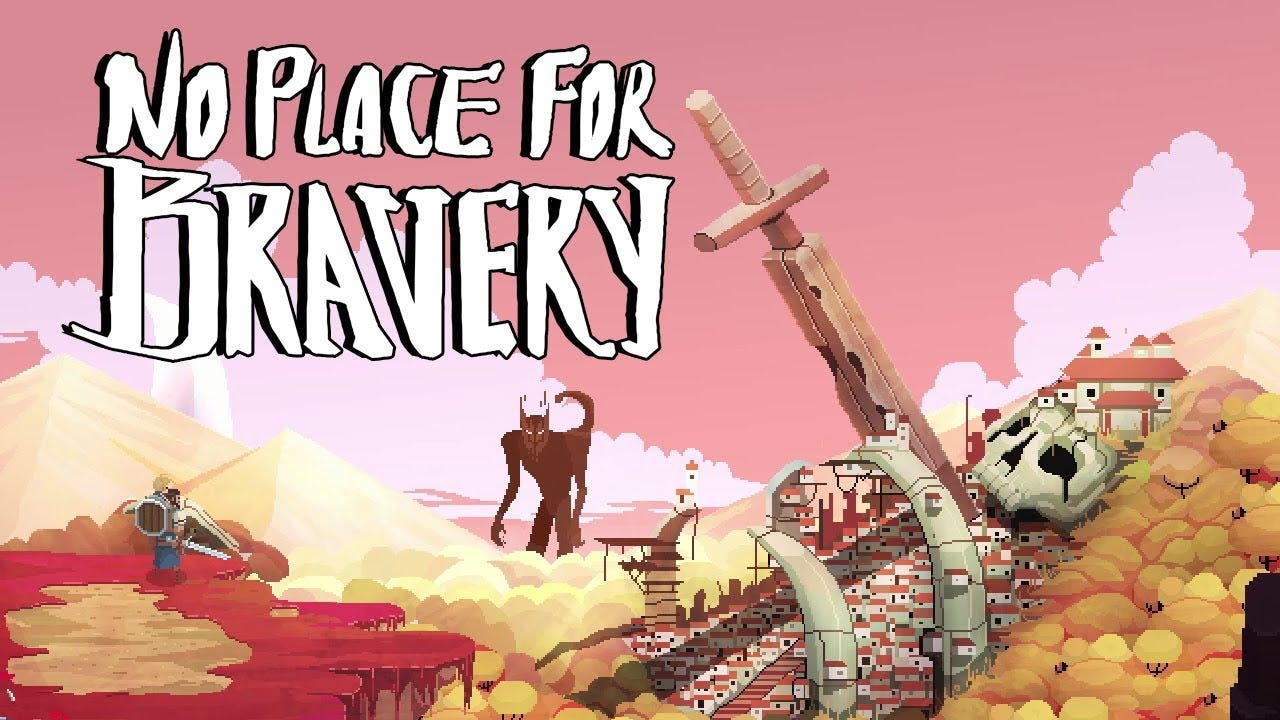No Place For Bravery Review
A promising world that is ruined by painful gameplay.
Code provided by the game's publisher
No Place For Bravery presents an interesting package. An RPG with an extremely deep mythology with souls-like combat. It has strong foundations that give plenty of room to deliver an engaging and unique experience. The visuals, story, and music all deliver on their promises. Ultimately, brutally annoying combat mechanics and world design cause the whole game to collapse under the weight of their missteps.
Let me start by saying that there is a good game here. People who love backstory and “ye-old” time-period pieces can absolutely find enjoyment in No Place For Bravery. The setting is gorgeous, with epic pixel art backdrops all throughout the game. The music is right on theme, filling the scenes with atmospheric choir vocals. The lore runs deep, with what seems like endless entries of world history to sift through. This game was clearly built on top of a passionate vision, and I was completely ready to buy in.
My only complaint about the things I have mentioned thus far was that the game was a little too high on its own supply. Almost every piece of dialogue referenced some game lore. Sure, they gave us lore entries to help learn the history, and I usually don’t mind reading text entries for context, but there was an overwhelming amount of content to sift through. It was honestly really hard to keep up with the plot of the game because of it. Now, while this was a negative for me, I do think some people will love this. The world, from what I gleaned, felt really well-thought-out, with tons of factions and historic moments to get lost in. It all seemed like really cool world-building, I just wish they had presented it a little better.
Note: I’m about to go into rant mode, but stick around because I end with a positive
If this were my only complaint about the gam,e I’d be fine, but the combat is the true killer here. The combat implements a Sekiro-esque parry system where you try and break the enemy’s posture to open them up for attack, and they can do the same for you. For people who played Sekiro, you will remember that what made that combat so good was the precision and control you had over your character. No Place For Bravery doesn’t even come close to having that much precision, and everything about the combat crumbles as a result. Games often try to mimic soul-like combat, but what it seems like they often fail to understand is that soul-like combat is enjoyable because of how mechanically precise it is. If any part of the movement, attacking, parrying, etc, feels off, everything starts to feel unfair, upsetting, and painful. It’s a high-risk, high-reward decision to make, and this game did not pull it off.
During my several hours with the game, I fought waves upon waves of generic enemies along with the occasional boss, and very rarely was it fun. Locking on to enemies was a mess, timing when to parry (a core mechanic) was incredibly sloppy, and every single enemy had enough damage that you would end your life and send you back to wherever the last bonfire was. Eventually, I had had enough and set the difficulty to easy, and then it became clear how lifeless the combat really was. Even when I was barely taking damage, I felt no desire to fight enemies. They felt like strategically placed roadblocks to keep me in the game longer. I ran past 30% of the enemies with no regrets.
The bosses were actually pretty cool in concept, but the controls were so bad that almost everyone was infuriating to fight. Considering that maybe 60% of this game is combat, you can see why I was so frustrated. As the game went on, my disdain for the core method of gameplay grew larger, casting a dark shadow over the entire experience. If you play this game, play it on easy from the jump, or you’ll be in for a rough time.
In addition to the combat, I found the locations pretty frustrating to navigate as well. The areas in this game were huge and maze-like, with almost no satisfying reward for exploration. Instead, I found myself stumbling into countless fights with enemies, only to feel like I had wasted time. If not the fights, I was doing some odd dash-based platforming that seemed to serve no other purpose than to remind me that even though I wasn’t in combat, I still had reason to be annoyed. The maps definitely needed to be scaled back so they could more effectively guide the players to exciting points of interest.
I want to end on a positive note, so let’s talk about the story. After playing from start to finish, I actually really enjoyed it. I think they do some really interesting things with the main character and the developing plot. While I was a little confused with the overall lore of the game and how the main plot fit in, the moment-to-moment story beats had me engrossed. There are even several decisions in the game, and I couldn’t believe the options they were giving me. The choices seemed like they would send the story spiraling in a different direction each time. This was the beacon of light at the end of the tunnel for me as I was growing increasingly frustrated with the game. The ending was certainly unexpected and made me feel like at least this journey wasn’t for nothing.
This review is harsh, I know, but like I said, I do believe the foundation for a great game was there. If you want a cool story and detailed world-building, put this game on easy and cruise through for the narrative beats, just don’t expect to get the full package here. I think whatever Glitch Factory’s next project is has an opportunity to be head and shoulder better than this one. If they lean more into the narrative elements and ditch the need to deliver punishing combat gameplay, they’ll have a winning formula.


